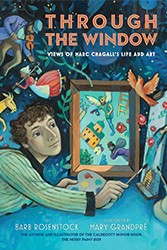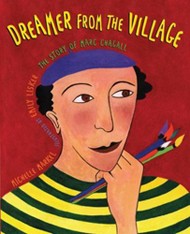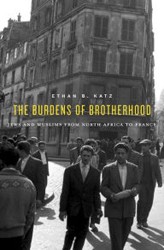This immensely readable book tells the story of the immigrant artists in Paris from just before World War I to the years leading up to the Second World War, most of whom were Jewish and came from the Russian empire. It is more social history than art history, for the author is not a trained art historian but a journalist with an interest in the artists who lived in Paris in the 1980s.
Of those artists who fled religious persecution and ideological repression, Chaim Soutine and Marc Chagall receive the greatest attention — though it was not only the “escape,” but also the destination that counted. Paris was considered the center of artistic creativity and many non-Jewish artists, including Picasso and Diego Rivera, spent years working there. Soutine and Chagall — as well as fellow art students from Vilna, Pinchus Kremegne and Michel KikoÏne — lived and worked at La Ruche (“the Beehive”), a famous home for artists on the Left Bank of the Seine that opened in 1902 and still functions today.
The author contextualizes the story of the poor immigrant artists who spoke very little French, giving historical background to the atmosphere in which the artists lived — including the Dreyfus Affair and World War I. Meisler quotes contemporary assessments of many of the artists whose lifestyles often worked against their recognition in their lifetimes: Amadeo Modigliani, who had arrived in Paris from Italy in 1906, for example, also settled in Montparnasse on the Left Bank and chose to associate with the immigrants, even though he spoke fluent French and was from a wealthy family.
The chapter on Dr. Albert Coombs Barnes, the Philadelphia physician who became an art collector and in 1922 bought more than fifty works by Soutine, includes the various accounts that have been published over the years about that purchase, which turned a little-known artist into an instant, if somewhat controversial, celebrity.
By the late 1920s, the fact that so many of the artists of the so-called “School of Paris” were immigrant Jews began to elicit anti-Semitic reviews, especially by the increasingly xenophobic French writers. The editor of Le Figaro, Camille Mauclair, called Montparnasse “the filth of Paris” and vilified the Jewish artists openly and aggressively. Other critics tended to distinguish the “School of Paris” from other French art and predicted its disappearance from the world of important art.
The Depression, the scandal of the swindler Serge Alexandre Stavisky, and the growing threat of Hitler and Fascism are all interwoven with the lives of the Jewish artists. Meisler focuses on the tragic life of Jules Pascin and on Soutine’s tragic death. The fall of France signified the end of Jewish art in Paris, which included dealers, poets, critics, and collectors. (Hitler planned to confiscate much of the great art in museums but dismissed anything by Jewish artists as “degenerate.”) Chagall managed to escape to the United States, as did several others; few returned to France after the war.
Shocking Paris is enhanced by small but high-quality color reproductions of works by Soutine, Pascin, Chagall, and Modigliani.




